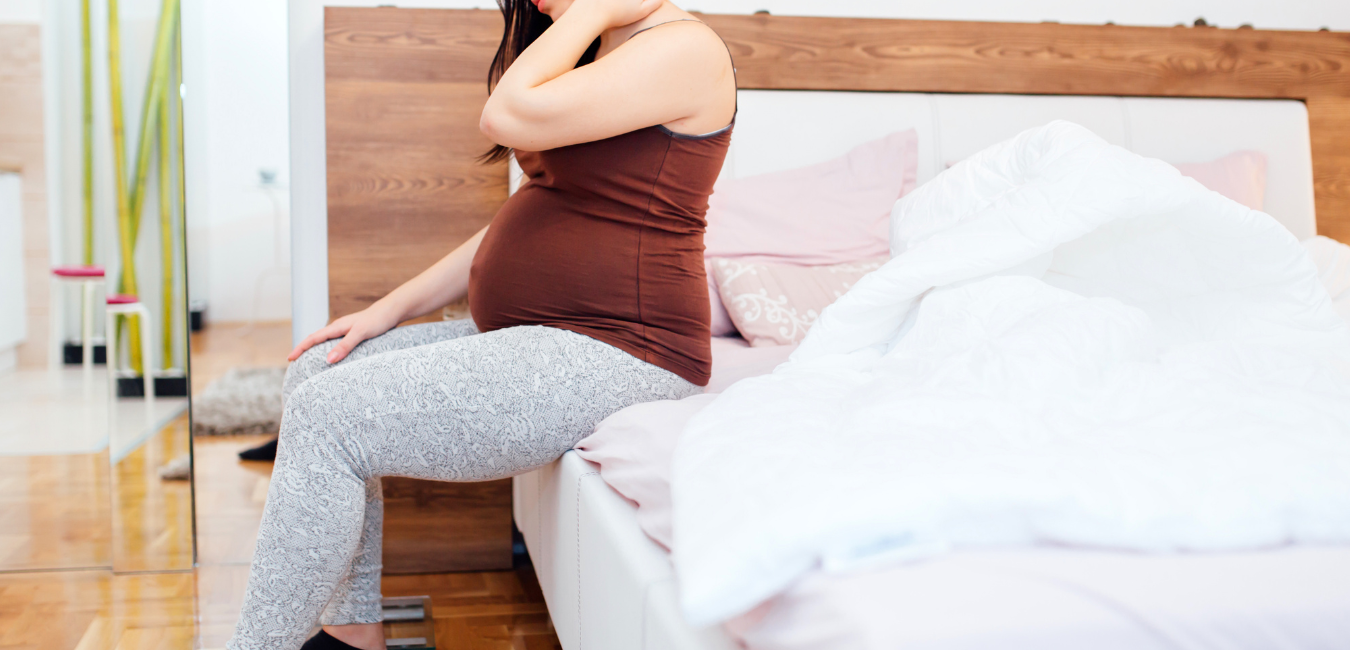By Tash Barry – Physiotherapist
Pelvic girdle pain (PPGP) is common during pregnancy, affecting 1 in 5 women. Typically, it is more common beyond 18 weeks gestation, however it can be present at any time during your pregnancy. Pain is usually moderate to severe, and can be experienced anywhere around the pelvis such as:
- Around your sacroiliac joints
- Over your PSIS (near the base of your spine)
- In your buttocks
- Over your pubic bone
- In your groin
- In your perineum
- It may radiate down the back of your leg(s), into your lower back or into your hips

What are the signs and symptoms?
Women with PGP complain of moderate to severe pain experienced around the pelvis, that can be sharp, shooting or burning. Pain is usually worse with activity and worse towards the end of the day. There can also be an ache when resting.
Activities that make the pain worse include standing or sitting for long periods, walking, climbing steps or stairs, getting in and out of the car, rolling over in bed, doing housework, or any single leg activities such as standing on one leg to get dressed.
It is eased by resting, sitting after standing or walking for long periods, and is typically better in the mornings.
What Causes it?
Pregnancy results in hormonal, postural and neuromuscular changes within the body. PGP is a result of the change in range of motion at the pelvis, that is not met by the change in neuromuscular control or biomechanical changes.
Previously it was thought Relaxin (a hormone produced during pregnancy that allows for ligamentous laxity) was the only cause for PGP, however the increased demands on the pelvis from added weight, increased load at the hips, altered gait pattern, altered balance, and altered muscle recruitment all contribute to developing PGP. It is important to know that PGP does not mean your pelvis is unstable or at risk of dislocating and that you should continue to exercise and move under a physiotherapist’s guidance. You may require treatment to reduce pain and symptoms before starting or returning to exercise.
Who gets it?
It is unknown exactly why some women develop PGP, but it is thought that a previous history of lower back or pelvic pain or trauma, a physically demanding occupation that requires long periods of standing (nurses, carers, beauty therapist, or hospitality work), repetitive twisting or loading, and/or being pregnant with twins or triplets can increase your chances of developing PGP.
When to get help for Pelvic Girdle Pain
Being diagnosed early can help prevent severe pain, keep you moving, exercising and working for longer, and enjoying your pregnancy! Treatment from an experienced physiotherapist can significantly improve the symptoms during pregnancy. Just remember although PGP is somewhat common, its not normal and can be helped.
What is the physiotherapy treatment for Pelvic Girdle Pain?
Physio aims to reduce pain and spasm, improve mobility, modify functional activities, and provide you with education on things that will aggravate, or support your pelvis to reduce pain. It may include:
- Massage, dry needling, joint mobilisations
- Exercises to strengthen your pelvic floor, abdominal, back and hip muscles
- Exercises to improve pelvic stability and balance
- Modifications for painful activities
- Referral or prescription of water-based exercises
- Fitting of a maternity belt if required
- Advice on positions for labour, birth, and sex
- Advice on pain relief such as the use of TENS and or hot packs
- Advice on self-management strategies (see below)
What can you do to help manage Pelvic Girdle Pain?
Remember the 4 P’s to managing PGP:
1. Posture
- Avoid sitting cross legged
- Place a small rolled up towel behind your lower back when sitting for long periods
- Avoid collapsing into one hip when standing, you may choose to stand with a slightly wider stance when on your feet for long periods
- Try avoiding overarching your back, gently engaging your core will help with this
- Use pillows to support your ‘bump’, and between your legs when lying on your side
2. Pelvic Symmetry:
- Aka an imaginary mini skirt to avoid exaggerated single leg movements such as lifting your knee to your chest or out to the side
- Sit down when getting dressed
- Keep your knees together when getting in and out of the car, or when rolling in bed
- Wear supportive, comfortable shoes (you may have to go up a shoe size if your feet have swollen)
- If the pain is severe on stairs, going up and down one leg at a time will help (or try avoiding them all together using escalators and elevators)
- Avoid pushing heavy objects, such as a supermarket trolley or pram
3. Pacing
- Be as active as possible within your pain limits, remember this will be different for everyone, and will be different at different stages of your pregnancy
- Take regular breaks when completing tasks
- Rest when you can!
- Get help with household chores from your partner, family, and friends to reduce the load on your pelvis
4. Pelvic Floor:
- Complete regular pelvic mobility and pelvic floor strengthening exercises to improve the tension around your pelvis, and increase the strength of the pelvic muscles
- Complete stability exercises (it’s important to remember not to lie flat on your back after 16 weeks gestation)
- See our pregnancy and postnatal classes available where you can exercise in a safe manner under physiotherapist supervision!
PGP can be a severe and debilitating condition, preventing you from getting through daily activities and enjoying your pregnancy. It’s important to remember that although it is a common condition, it is not normal, and physiotherapy treatment can significantly help to reduce your symptoms. Book in with one of our physiotherapists today for management of PGP or any pregnancy related conditions.


